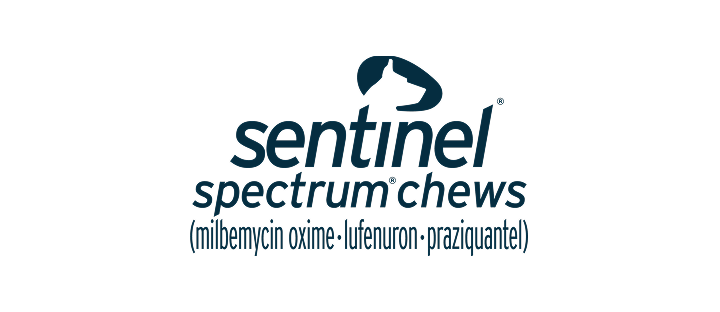Lactulose Solution
Prescription required.
You already have a

subscription.
You already have a

subscription in cart.
Prescription required.
You already have a

subscription.
You already have a

subscription in cart.


What is Lactulose Solution?
Lactulose is used in cats and dogs as a laxative. Lactulose requires a prescription from your veterinarian.
For:
Cats and Dogs
Benefits:
- Liquid is easy to administer
- No restrictions on food, drink, or activity unless otherwise directed by the veterinarian.
How it Works:
Lactulose is a disaccharide sugar composed of galactose and fructose. Unlike other sugars, its not absorbed into the blood. It passes unchanged to the large intestine. In the large intestine, lactulose is broken down by bacteria, resulting in the production of various acids. These acids draw water into the colon, softening the stool and increasing the volume, resulting in a laxative effect.
Cautions:
Side effects of lactulose include symptoms of flatulence, bloated stomach, and cramping. Diarrhea and dehydration are symptoms of overdose. Tell your veterinarian if your pet is diabetic, or pregnant or lactating.
Brand Name:
Chronulac or Cephulac (Hoeschst-Marion Roussel), Constulose or Enulose (Alpharma)
Generic Name:
Lactulose (lak-chew-lows)
What should I discuss with my veterinarian before giving lactulose to my pet:
Tell your veterinarian if your pet is diabetic. Tell your veterinarian if your pet is pregnant or lactating.
What is the most important information I should know about Lactulose:
Lactulose is a prescription medication that is not FDA approved for use in animals; however, it is a commonly accepted practice for veterinarians to use lactulose in dogs and cats as a laxative. Lactulose is available as a 10 Gm/15ml liquid. The usual laxative dose in dogs and cats is 1 ml per 2 pounds of body weight given every 8 hours initially, then use as needed. Notify the veterinarian if the pet develops excessive diarrhea.
How should this medication be given:
Give this medication exactly as directed by your veterinarian. If you do not understand the directions ask the pharmacist or veterinarian to explain them to you. Lactulose may be mixed with fruit juice, water, or milk to improve the taste. It may take 24 to 48 hours before the effects of lactulose are seen. Lactulose may darken slightly in color. This change is harmless. However, if lactulose becomes very dark or uneven in consistency do not use the product. Store lactulose at room temperature, away from moisture and heat. Keep this medication away from children and pets.
What happens if I miss giving a dose:
Give the missed dose as soon as you remember. However, if is almost time for the next regularly scheduled dose, skip the missed dose and take the next one as directed. Do not give a double dose of the medication.
What should I avoid while giving Lactulose to my pet:
There are no restrictions on food, drink or activity unless otherwise directed by the veterinarian.
What are the possible side effects of Lactulose:
If any of the following serious side effects occur, stop giving lactulose and seek emergency veterinary medical attention; an allergic reaction (difficulty breathing; swelling of the lips; tongue or face; hives). Other less serious side effects may occur. Continue giving lactulose and talk to your veterinarian if your pet experiences flatulence, abdominal cramps, diarrhea or nausea and vomiting. Other side effects may also occur. Talk to your veterinarian about any side effect that seems unusual or bothersome to the animal.
What other drugs will affect Lactulose:
Tell your veterinarian if your pet is being given an antacid as this may decrease the effects of lactulose. Drugs other than those listed may also interact with Lactulose. Talk to your veterinarian before giving your pet any prescription or over the counter medicines.


Lactulose Solution Directions:
- Lactulose Solution is a prescription medication used in dogs and cats as a laxative.
- Lactulose is also used to reduce blood ammonia levels in the prevention and treatment of hepatic encephalopathy.
- Lactulose Solution is not FDA approved for use in veterinary medicine; however, it is a commonly accepted practice for veterinarians to prescribe this medication for dogs and cats.
- Because Lactulose is a type of sugar (disaccharide) tell your veterinarian if your pet is diabetic.
- Antacids may decrease the effects of Lactulose.
Lactulose may be mixed with water or milk to improve the taste. It may take 24 to 48 hours before the effects of Lactulose are seen. Notify your veterinarian if your pet develops excessive diarrhea.
Lactulose Solution Dosage:
| Weight | Dosage |
|---|---|
| All weights | The usual does is 1 ml for every 2 lbs of pet's body weight every 8 hours to start, or as directed by your veterinarian, then use as needed |
| Weight | Dosage |
|---|---|
| All weights | The usual does is 1 ml for every 2 lbs of pet's body weight every 8 hours to start, or as directed by your veterinarian, then use as needed |
| Horses | Do not use! |
|---|
Storage:
Store at room temperature, away from heat and moisture.


Lactulose Solution Ingredients:
| Active Ingredients (per 15 ml) | Amount |
|---|---|
| Lactulose | 10 gm |
| Lactose | Less than 1.6 g |
| Other sugars | Less than 1.2 g |


 Swipe
Swipe











































